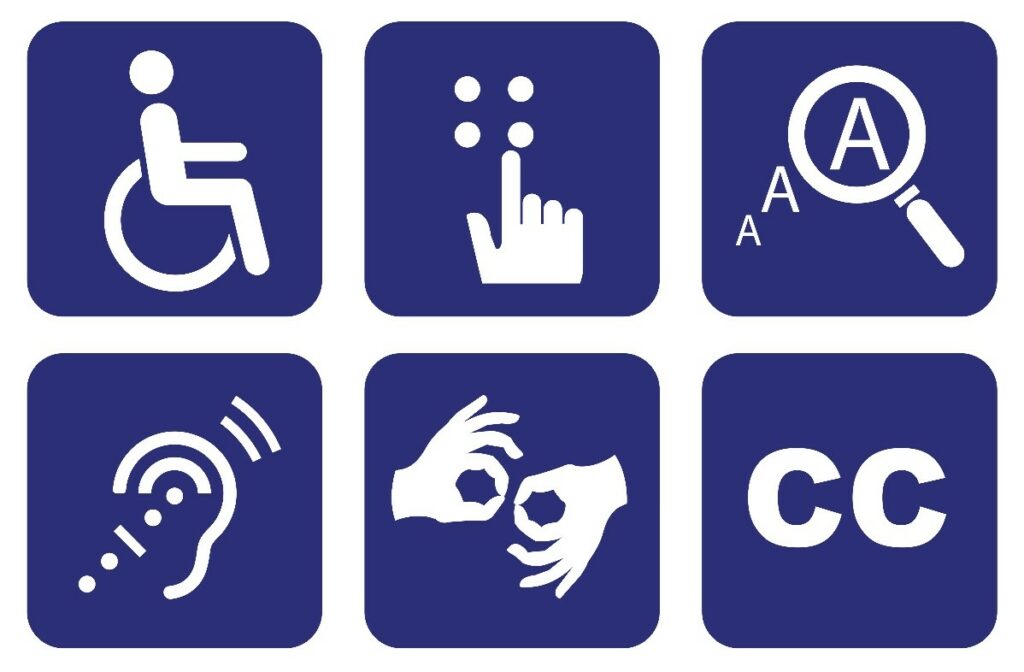
Our Equity in Action blog series has presented scenarios related to our Six Steps to Make Your Legal Workplace more Equitable to guide you in making your legal workplace more equitable.
Our sixth step specifically focuses on identifying opportunities to make our offices more accessible. Before diving into related scenarios, we’re discussing the definition of disability, types of disabilities, what it means to be accessible, and highlighting the Society’s new Disability Equity Committee (DEC).
Defining Disability
The Nova Scotia Accessibility Act defines disability as: “a physical, mental, intellectual, learning or sensory impairment, including an episodic disability that, in interaction with a barrier, hinders an individual’s full and effective participation in society.”
30% of Nova Scotians age 15 and older identify as having at least one disability — the highest number of any province in Canada. As our population ages, the percentage of Nova Scotians living with a disability is likely to increase. Disability is the world’s largest minority group, and the only minority group that someone can become a member of at any time.
There is no one-size-fits-all when it comes to disability; every individual experience is unique. While you may be able to notice when someone walks with a cane, it is much harder to recognize learning disabilities, hearing challenges, and memory loss. Not all disabilities are visible.
According to the Centers for Disease Control and Prevention, a disability can be anything that affects a person’s:
- Vision
- Movement
- Thinking
- Remembering
- Learning
- Communicating
- Hearing
- Mental health
- Social relationships
For more information on the different types of disability, visit the CDC’s Disability and Health Overview Page.
What does “accessibility” mean?
Participants in Nova Scotia’s What We Heard: Accessibility in Nova Scotia report defined accessibility as:
- Inclusive & equitable: persons with disabilities have access to the same resources, services, and infrastructure as other Nova Scotians.
- Barrier-free: Persons with disabilities should have barrier-free access to buildings, education, healthcare, employment, housing, communication, and transportation.
- Safe & respectful: Persons with disabilities should feel safe and supported in their communities, free from stigma or discrimination.
- Educated & aware: All Nova Scotians are aware of issues related to disability and accessibility.
- Proactive: Accessibility is considered at all stages of policy development and implementation
Stay tuned for next month’s Equity in Action blog, where we will outline five steps to achieve accessibility and provide tangible examples to implement in your own law practice.
What is the Society doing to address issues of accessibility and discrimination?
Council recently approved the creation of a Disability Equity Committee (DEC).
This new Committee is dedicated to supporting Council in the governance of the Society by promoting, monitoring, and providing advice about programs and policies that address issues of accessibility and discrimination – as experienced by members of disability communities – in the legal profession and with regard to the administration of justice.
The Committee will develop policy and program options for the promotion of equity and diversity in the legal profession in Nova Scotia, as it relates to Disability Communities, raise awareness of historic and current accessibility issues and discrimination affecting Disability Communities within the legal profession and more.
Are you interested in contributing to the DEC? We’re seeking members and public representatives with lived experience from the disability community to populate this new Committee. Complete the online expression of interest form by Friday, December 3, 2021 to be considered.
Our next Equity in Action blog post, coming in January 2022, will focus specifically on identifying opportunities to make your office more accessible. In the meantime, review all of our latest Equity in Action blog posts as we explore ways to make your legal workplace more equitable.
This Equity in Action blog post was written by Hannah Baillie, NSBS Communications Coordinator.
